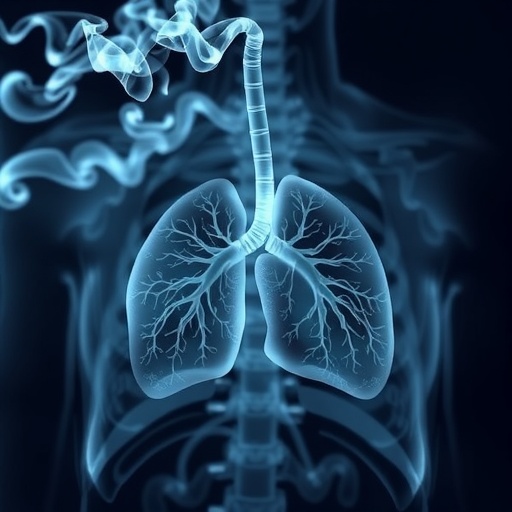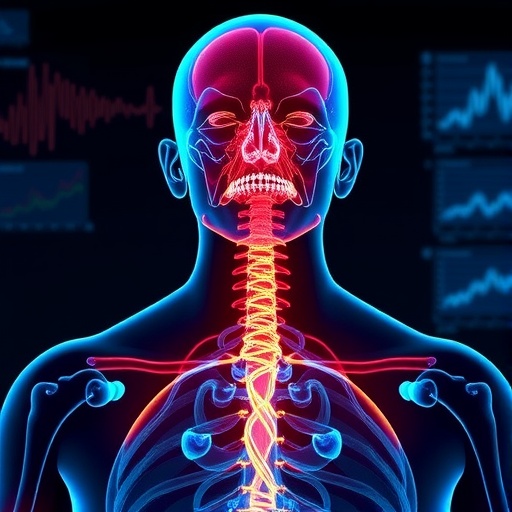
In a groundbreaking study published in the Journal of Artificial Organs, researchers led by Li, R., alongside Prastein, D.J., and Boyce, S.W., delve into a compelling phenomenon known as the “smoker’s paradox” within the context of left ventricular assist device (LVAD) implantation. This phenomenon, previously observed in various cardiovascular scenarios, indicates that smokers sometimes exhibit better survival rates post-surgery compared to their non-smoking counterparts. The study utilizes data from the National Inpatient Sample collected between 2015 and 2021, providing a large population-based analysis that seeks to unravel the complexities behind this paradox.
The smoker’s paradox poses a significant challenge to established notions about tobacco use and its detrimental health effects. Researchers have long understood that smoking is a leading cause of cardiovascular disease, contributing to conditions that necessitate interventions such as LVAD implantation. However, this study brings a fresh perspective, revealing that in-hospital outcomes for LVAD recipients who smoke may diverge notably from those who don’t. This inconsistency invites further exploration into the biological and behavioral factors that could be influencing these outcomes, potentially reshaping strategies for pre-surgical assessments and post-operative care.
At the heart of this investigation lies an extensive analysis of patient data drawn from the National Inpatient Sample, which captures a diverse range of demographic information and health outcomes across a vast patient population. The research methodology incorporates various statistical tools to analyze in-hospital mortality, complication rates, and overall recovery trajectories between smokers and non-smokers who underwent LVAD surgery. The robustness of the findings underscores the need for healthcare providers to consider smoking status as a nuanced factor in treatment plans.
While the results of the study have sparked considerable intrigue, they also prompt important questions regarding the underlying mechanisms at play. One hypothesis is that nicotine, often viewed solely as a harmful substance, may bear certain protective influences on cardiovascular physiology. Nicotine has been shown to stimulate angiogenesis—the formation of new blood vessels—potentially supporting heart function in critically ill patients. This unexpected perspective challenges conventional wisdom and could imply that simply reducing smoking rates without understanding the broader implications may not always lead to improved outcomes.
The researchers meticulously examined the varying outcomes associated with different smoking statuses. Surprisingly, it was noted that smokers exhibited statistically significant differences in recovery rates post-LVAD surgery compared to non-smokers. This finding aligns with previous studies in similar cardiac populations, suggesting a recurring trend that may redefine risk stratification in surgical cardiology. As such, healthcare professionals are prompted to reconsider blanket assumptions about patient profiles, focusing instead on a more individualized approach based on emerging evidence.
The complexities of the smoker’s paradox are further highlighted by the intricate interplay between smoking and comorbid conditions. For instance, smokers often present with different health challenges compared to non-smokers, such as higher prevalence of respiratory issues, which could complicate postoperative care plans. Understanding how these additional health variables influence surgical outcomes becomes paramount in informing clinical practices. The study’s insights advocate for a deeper, more integrative evaluation of smokers’ overall health status prior to LVAD implantation.
Moreover, the implications of the research extend beyond the operating room. The paradox not only affects immediate surgical outcomes but also has potential long-term ramifications on guidelines related to smoking cessation programs. If smoking status can influence recovery trajectories positively in certain cardiac cases, the conclusions drawn from this study might lead to reformed strategies in patient education surrounding tobacco use. Educational campaigns would benefit from highlighting the nuanced aspects of tobacco consumption and its unexpected interactions with surgical recovery, prompting patients to engage more actively with their health.
Peer-reviewed literature has long established the risks associated with smoking, but the evidence presented in this study suggests a need to reassess how these risks are communicated. Many patients may feel that their odds of surgical success diminish upon learning of their smoking habits. However, understanding the potential for improved outcomes could empower individuals facing surgery to make more informed decisions about their health and recovery paths. This study thus contributes significantly to the ongoing dialogue regarding smoking, health, and surgery.
In an era overwhelmed by viral health misinformation, the findings presented in this research may also serve a critical role in alleviating misconceptions regarding smoking and surgery. As patients are inundated with advice from various sources, both online and offline, presenting peer-reviewed studies that elucidate the complexities of health issues can combat oversimplified views of smoking’s dangers. The nuances of this paradox remind us of the importance of thorough research before forming absolute conclusions about patient care and health behaviors.
While the implications of these findings are profound, they also highlight the critical need for further research into the biological mechanisms behind the smoker’s paradox. Future studies could explore the genetic, hormonal, and metabolic differences between smokers and non-smokers, seeking to identify specific factors that contribute to the unexpectedly favorable outcomes observed in smokers after LVAD surgery. Such research would not only clarify the paradox but could also pave the way toward tailored therapeutic strategies in cardiac patient care.
As the medical community grapples with these revelations, the findings of Li et al. can trigger transformative discussions at national and international healthcare forums. Conferences centered on cardiac health will likely explore the implications of this study, resulting in updated practices and policies that reflect a more nuanced understanding of smoking in the context of surgical outcomes. As a result, providers may begin to craft individualized treatment plans, embracing a more comprehensive view of each patient’s health profile.
In conclusion, the research conducted by Li, Prastein, and Boyce offers a revolutionary perspective on the relationship between smoking and LVAD surgery outcomes. The smoker’s paradox challenges the medical community to rethink ingrained attitudes towards smoking while simultaneously encouraging clinicians to adopt a more personalized approach to patient care. As this line of investigation progresses, it holds the potential to enhance surgical outcomes and transform public health narratives regarding smoking and cardiovascular health.
Subject of Research: Smoker’s paradox in in-hospital outcomes of left ventricular assist device implantation
Article Title: Smoker’s paradox in in-hospital outcomes of left ventricular assist device implantation: a population-based analysis of National Inpatient Sample from 2015–2021
Article References:
Li, R., Prastein, D.J. & Boyce, S.W. “Smoker’s paradox” in in-hospital outcomes of left ventricular assist device implantation: a population-based analysis of National Inpatient Sample from 2015–2021.
J Artif Organs (2025). https://doi.org/10.1007/s10047-025-01515-w
Image Credits: AI Generated
DOI:
Keywords: smoker’s paradox, LVAD implantation, National Inpatient Sample, cardiovascular health, smoking, surgical outcomes
Tags: artificial organs in modern medicinebehavioral factors in cardiovascular surgerybiological factors influencing surgery outcomesgroundbreaking cardiovascular research studiesimplications for pre-surgical assessmentsLVAD implantation outcomesNational Inpatient Sample analysispostoperative care for LVAD patientssmoker’s paradox in cardiovascular healthsurvival rates in smokers vs non-smokerstobacco use and health effectsunderstanding cardiovascular disease and interventions




